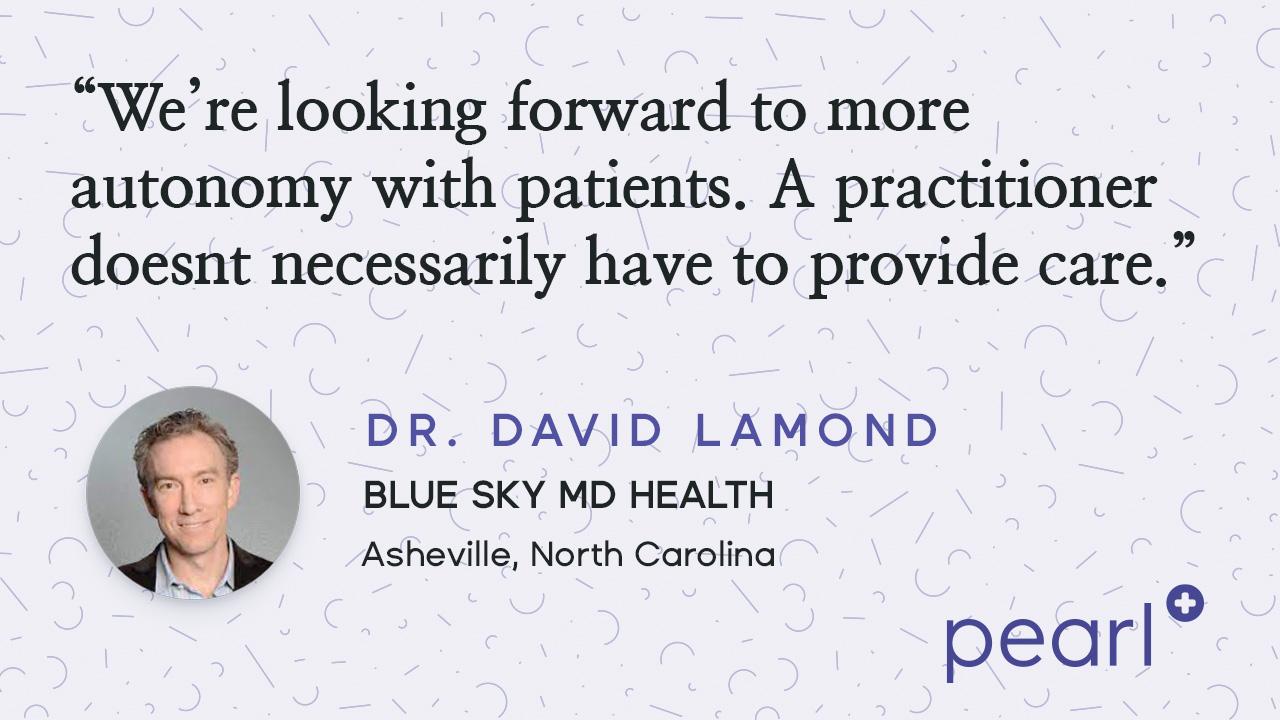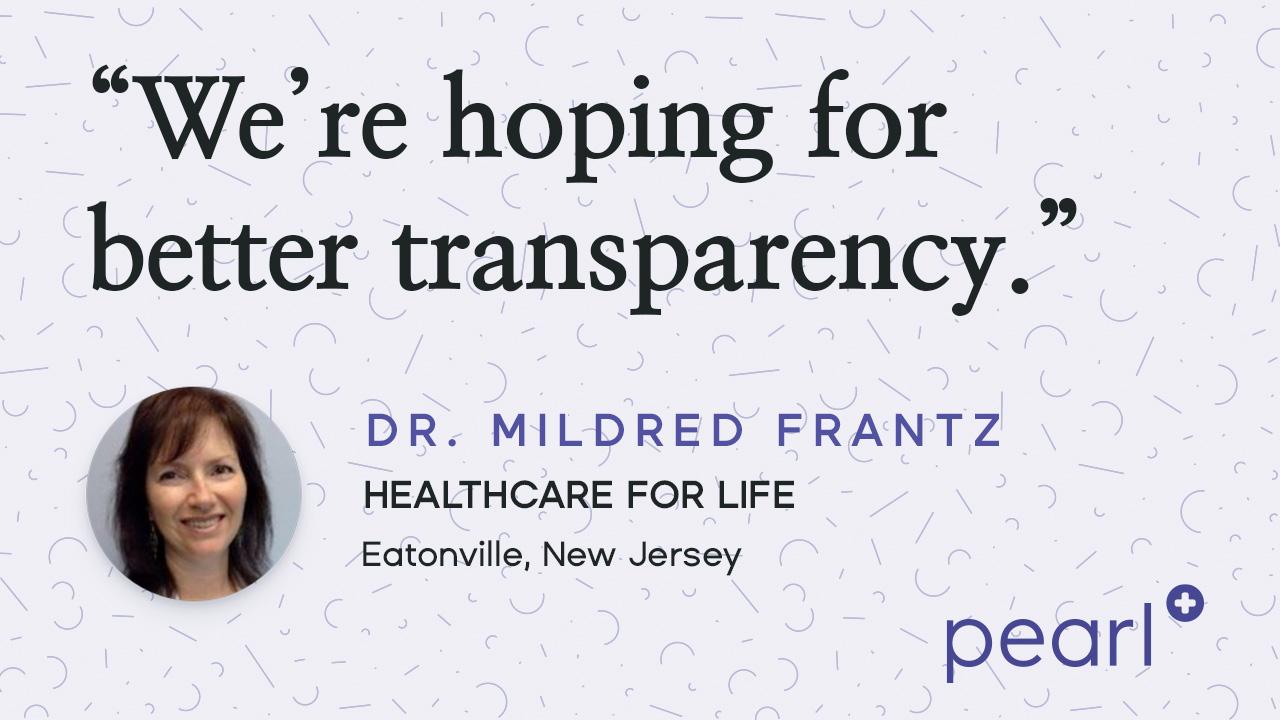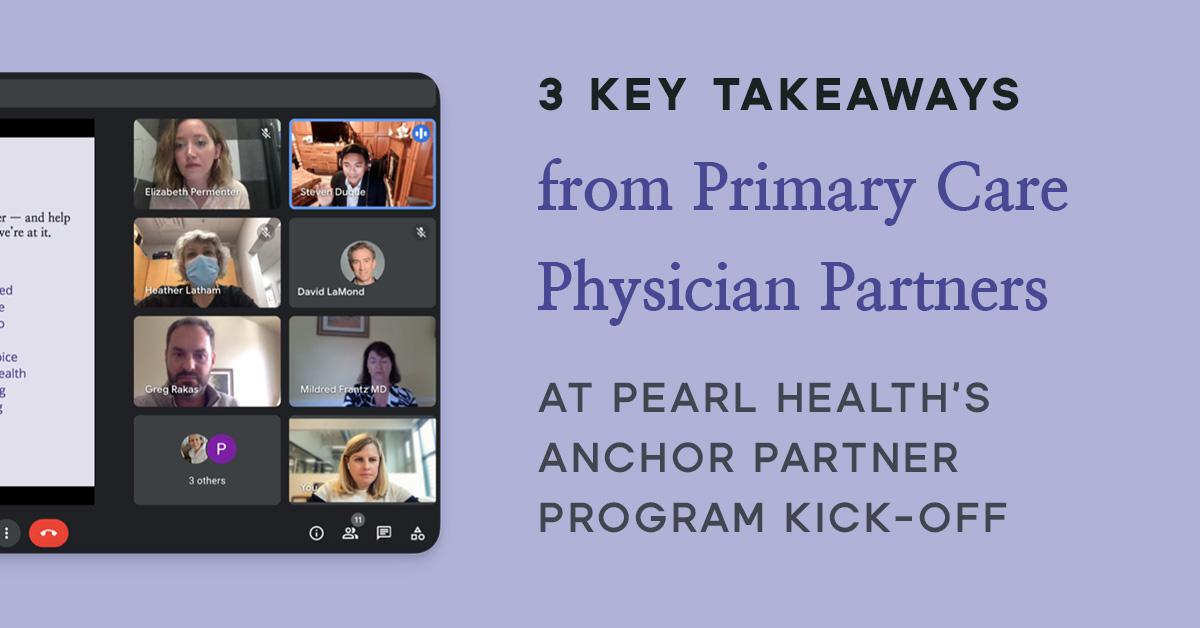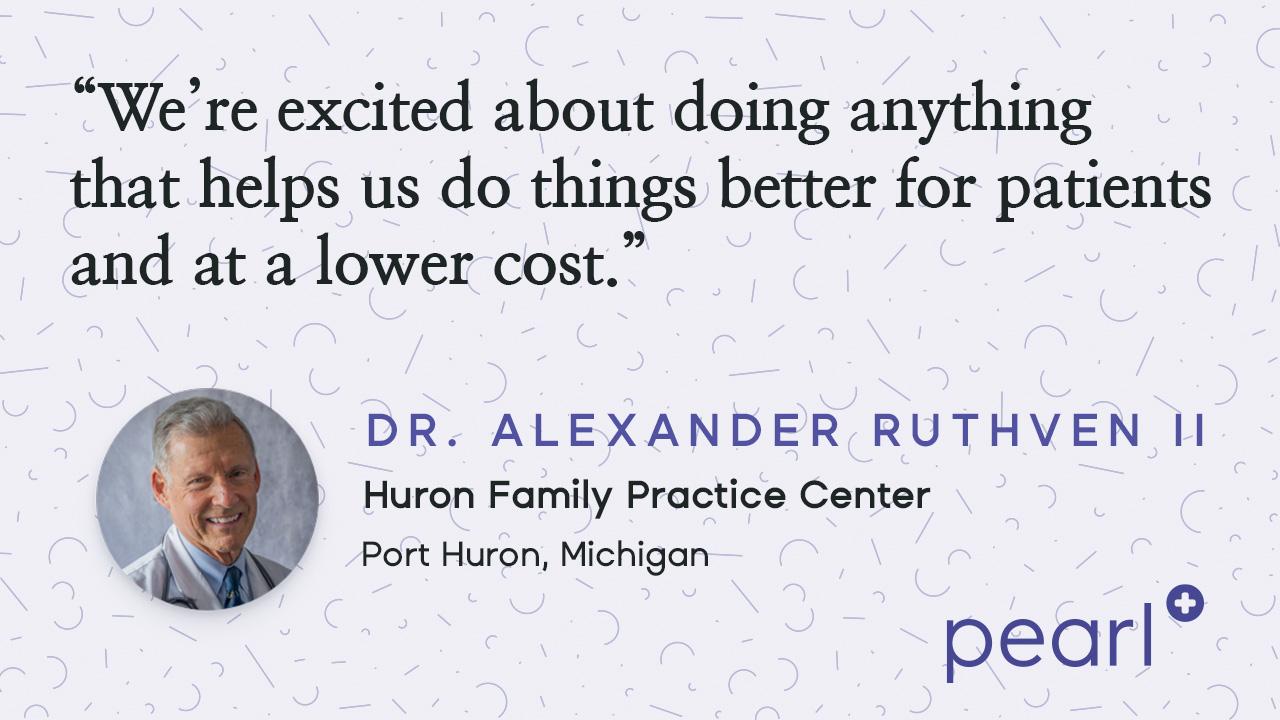Last week I had the privilege of joining the inaugural meeting of Pearl Health’s Anchor Partner Program to hear from some of our new partners: primary care physicians and practice mangers across the United States, striving to deliver better care to patients 65 and older who are covered by traditional Medicare.
With our Anchor Partners’ help, Pearl Health is preparing to enable primary care physicians to deliver better health outcomes for thousands of Medicare patients through Global and Professional Direct Contracting (GPDC) — or, more simply, “Direct Contracting“. Direct Contracting is a promising new value-based care model recently launched by the Center for Medicare and Medicaid Innovation (CMMI).
As Anchor Partner doctors and practice leaders shared their thoughts, there was a mixture of excitement for innovative approaches to health care management, unease with the way things currently are, and enthusiasm for joining a community of like-minded individuals who are working to realize the promised land of healthcare: better outcomes, lower costs, and higher patient and provider satisfaction.
Below are a few key takeaways, the first of many as our Anchor Partner Program — led by my colleagues Elizabeth Permenter and Jennifer Rabiner — uncovers insights and gathers feedback as we build, iterate, and refine the designs of our physician enablement platform and support services.
Takeaway 1: Our primary care physician partners want to do better for their patients at a lower cost.
“We’re excited about doing anything that helps us do things better for patients and at a lower cost,” said Dr. Alexander Ruthven II of Huron Family Practice Center in Port Huron, Michigan. Our healthcare system, as a whole, would benefit from sharing Dr. Ruthven’s sentiments.
As noted on Pearl’s blog in the past, the cost of care for a Medicare patient is massive. At more than $19,000 per person 65 and older, it’s more than 5X higher than spending per child and almost 3X the amount spent on working age people, according to data from the Centers for Medicare & Medicaid Services (CMS). This number is is expected to rise by as much 5.1% per year over the next decade. As many others have also noted, Medicare’s rising costs paint a bleak future for its long-term financial sustainability unless transformative efforts are taken by policymakers, physicians, patients, and other stakeholders.
Aimed at addressing this issue, CMS has launched various models and approaches to deliver on the promise of value-based care, including innovative public-private partnerships like Medicare Advantage. Unfortunately, many of these have fallen short of their intended purpose. For example, recent reviews of Medicare Advantage indicate that Medicare Advantage plans — which are run by private HMOs or PPOs (i.e., insurance companies and healthcare systems) — actually undermined value-based medical care and increased costs to the tune of an additional $321 per person per year when compared to traditional Medicare in 2019.
For a broader overview of CMMI’s past successes and challenges with experimenting with Medicare’s value-based programs over the last decade, you can get up to speed by watching the video below with Pearl’s Ankit Patel and Gabe Drapos.
Takeaway 2: Our primary care physician partners want more autonomy to do the right thing for their patients.
“[When it comes to GPDC,] We’re looking forward to more autonomy with patients,” said Dr. David LaMond, CEO, Medical Director, and Founder of Blue Sky MD Health, which owns and operates three primary care practices across nine offices throughout Western North Carolina.

Similarly, at Pearl we believe that increasing primary care physicians’ autonomy is central to improving how resources are deployed across our health care system. Primary care physicians engender special trust from their patients, and they’re uniquely positioned to quarterback holistic care management programs for their patients.
A recent article in Harvard Business Review astutely observed, “The scope of primary care is as broad and as deep as the human experience. Primary care interactions, more so than in any other discipline of medicine, cover a vast territory.”
The same article goes on to argue that we need to reform the payment model to truly empower primary care. Author Kyna Fong explains, “America has an opportunity to invest in primary care in a way that measures and incentivizes the true value of primary care, without stripping primary care doctors of their autonomy or burdening primary care with reductionist measures that are onerous and contribute to burnout. The emphasis should not be on rationing care; it needs to lean more heavily on delivering the care that patients need, which primary care physicians are uniquely positioned to provide.”
That’s why Pearl — and our partners — are so excited about capitated payments via Direct Contracting: we believe that providing revenue stability and aligning primary care physicians’ financial incentives with patient health outcomes will enable autonomy that will unlock value.
Takeaway 3: Our primary care physician partners want transparency around engaging risk.

As its sole primary care physician, Dr. Frantz leads HealthCare for Life, which has earned numerous accolades for compassion, patient-centricity, timeliness, and overall excellence. With staff already stretched thinly, Dr. Frantz shared, the practice must spend scarce time and resources on wading through what seems like endless financial data and reporting to operate the business.
As Michael Kopko, Pearl’s CEO and co-Founder, writes, “To date, there has not been a transparent and efficient way for physicians and payors to evaluate the opportunities presented by engaging in risk-based contracts. By surfacing physician performance and demonstrating effective management in the Pearl model, we can facilitate this marketplace with forward-thinking payors.”
At Pearl, we’re creating transparency for primary care physicians and their staff with our free, easy-to-use calculator, which shows them how the components of Direct Contracting may change based on their own variables. And for those who want a deeper dive into how to maximize value from participating in CMMI’s Direct Contracting model, we also offer a free personalized analysis.
The Road Ahead
As I shared with our Anchor Partners, we’re grateful for their engagement, feedback, and insights. Looking forward, we’re eager to listen and learn from them — and all of our partner primary care physicians — as we transform primary care and make value-based care work for every doctor.



